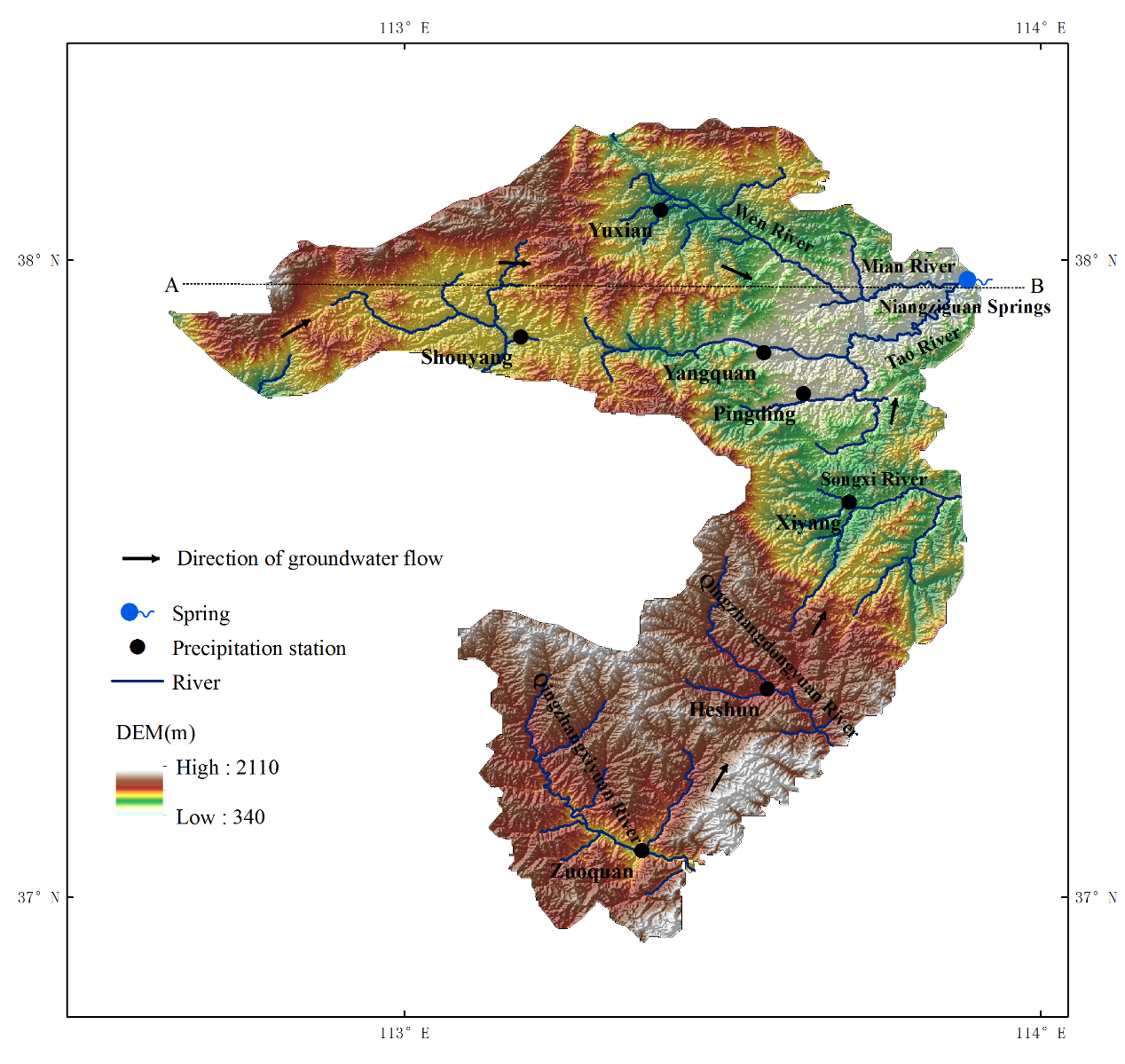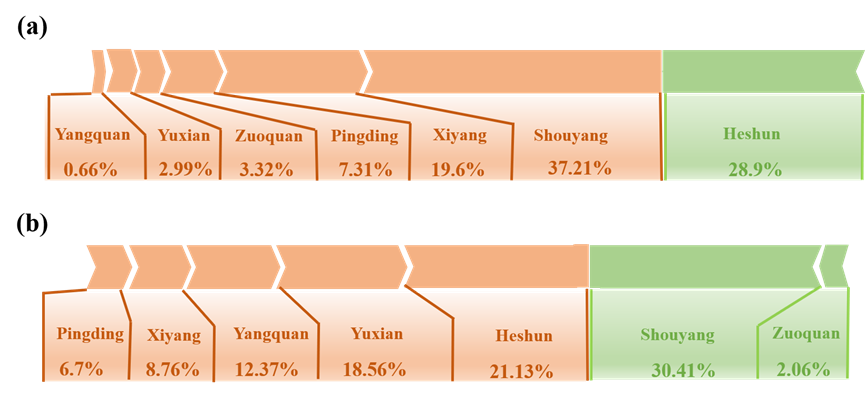The interdisciplinary fusion and innovation team on groundwater numerical simulation of Tianjin Normal University published a paper in the Journal of Hydrology entitled "Spatial-temporal behavior of precipitation-driven karst spring discharge in a mountain terrain", which proposes a spatiotemporal pattern of precipitation-driven springs in the northern karst region.
The karst springs originate from Taihang Mountains in the upstream of the Haihe River are important contributors to Haihe River. But we know less about the mechanism of the karst hydrological processes because of complexity. Specifically, behaviors of karst springs are manifestations of spatial and temporal dynamics involving multi-hydrogeological processes.Identifying each process or factor from a karst spring record is a grand challenge for karst groundwater's sustainable development and management. To explain the process and underlying mechanisms of spring discharge in karst regions, the authors established a deep interpretable model by coupling (SHapley Additive exPlaination) SHAP with a (long short-term memory) LSTM and applied to Niangziguan Springs catchment, North China (Figure 1).

Figure 1. The DEM of Niangziguan Springs catchment.
The results show that the precipitation over the 12-month period has the most significant effect on the spring discharge.Authors categorize the precipitation-driven spring discharge at the catchment into three patterns according to regional landform and karst aquifer characteristics based on the SHAP analysis. Firstly, hydraulic connections between the surface formation and karst aquifer are copious in the well-developed river valleys, and intense precipitation drives spring flow. Secondly, in subregions where the karst aquifer is deep, and the mountain valley slopes are steep, heavy precipitation becomes surface runoff, leaving only a tiny fraction for spring recharges. As a result, the karst aquifer is mainly recharged by moderate to light precipitation. Thirdly, in the regions where karst aquifers are exposed and groundwater discharges, the groundwater level is the primary factor dictating precipitation and spring discharge processes (Figure 2).

Figure 2. Contribution model of precipitation to spring flow.
Additionally, the authors studied the recharge characteristics and contributions of each sub-region's precipitation to the maximum and moderate spring flows and the contribution patterns within the spring catchment. The results showed that the maximum spring flow is not sourced from local maximum precipitation within the basin, but rather from intense rainfall over a wider area within the basin. Medium-level spring flow recharge is sourced from moderate precipitation within the basin (Figure 3).

Figure 3. Contribution of sub-regional precipitation to maximum (a) and median (b) spring flow in Niangziguan Basin.
This study was conducted by researchers from Tianjin Normal University and the University of Arizona in a collaboration. The corresponding author was Professor Yonghong Hao from the Key Laboratory of Water Resources and Environment of Tianjin Municipality, and the first author was undergraduate student Xiehui Song. The project was financially supported by the National Natural Science Foundation of China (42072277).
Reference:
Song, X.; Hao, H.; Liu, W.; Wang, Q.; An, L.; Jim Yeh, T.-C.; Hao, Y., Spatial-temporal behavior of precipitation driven karst spring discharge in a mountain terrain. Journal of Hydrology 2022, 612, 128116.











